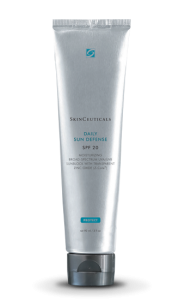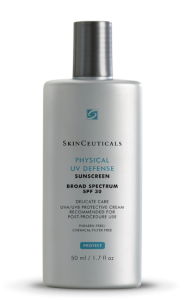Summer is a wonderful time of year, but the sun and heat can take a toll on your skin, hair, and body. That doesn’t mean you should stay indoors — with a little care and a few precautions, you can enjoy summer to its fullest.
1. Try a Self-Tanner
Ultraviolet (UV) rays from the sun are very damaging, especially UVA rays. They not only burn your skin and cause premature aging, but can also lead to skin cancer.
So, instead of lying for hours in the sun, get that sun kissed glow with a self-tanner. Many salons offer spray-on tan services, or you can purchase an inexpensive self-tanning lotion at your local drugstore. Gradual self-tanning moisturizers keep your skin smooth as they help you control just exactly how bronzed you become, and they are less prone to streaking. Just remember to exfoliate before you apply self-tanner to remove any dry skin that could pick up excess color and lead to an uneven appearance.
2. Slather on Sunscreen
Many dermatologists recommend using a sunscreen with a sun protection factor (SPF) of at least 30. The Skin Cancer Foundation points out that tests demonstrated SPF 30 products block out only 4 percent more rays — 97 percent compared to 93 percent for SPF 15. So know that you’re getting more protection with SPF 30, but not double the amount of SPF 15. In the past, broad-spectrum SPF sunscreens made skin look whitish because of the opaque nature of zinc oxide and titanium dioxide, which physically block UV rays, but with more refined, micronized formulations, you can get their sun protection benefits without the ghostly appearance.
More sunscreen smarts to follow include:
- Check the sunscreen’s ingredients list; it should contain agents that block both UVA and UVB rays.
- Apply sunscreen regularly, as it will wear off with prolonged swimming or sweating.
- Even if it’s cloudy, ultraviolet rays can still reach your skin, so wear sunscreen even on sunless days.
- Many makeup and skin care products contain an SPF agent, but don’t be fooled: Look for the SPF number and use extra sunscreen if it’s below 15.
3. Give ’Em Lip Service
Use a lip sunscreen with SPF agent even if you’re putting lipstick on, too. Many chapsticks are available with and SPF of 15 and 30. One of my personal favorites is Zinka Clear Lip Protector with Aloe. It smells good and doesn’t go on greasy and has and SPF of 30.
4. Remember Hair Care
The beating sun will hit your hair hard, but there are a number of sprays containing SPF that you can put on after you wash your hair. This is a must if your tresses has been chemically treated. When you are out in the sun and swimming, wet your hair before you swim, then put conditioner on and run it through your hair. This makes it harder for the chemicals in the water to be absorbed by your hair. An added bonus, your hair smells good all day!
Another tip: Don’t overwash your hair as this can remove the oils that naturally protect it.
5. Exfoliate Head to Toe
Expensive scrubs and salts feel wonderful, but if you’re on a budget, you can do just as good a job using an exfoliation mitt or glove and your regular body wash. Gentle exfoliation is essential if you’ve had any area waxed, particularly in the bikini area, as it can help prevent ingrown hairs.
6. Moisturize and Nourish With Oils
Elbows, feet, and ankles can get very dry, so try avocado oil to keep them healthy and smooth. Avocado oil not only moisturizes, but also has nourishing properties as it contains vitamin E.
7. Be Kind to Your Face
Chemical peels, creams, scrubs, and other products containing glycolic acids and retinoids should not be used if you spend a lot of time in the sun: These treatments can make your skin more sun sensitive and cause more damage to your skin. If you must use them, wear a hat and sunscreen to protect your face. Follow this advice as well if you’re taking certain antibiotics, such as tetracycline, which also make you more prone to sunburn.
8. Try Mineral Makeup
Because mineral makeup has a light powder base, it won’t sweat off as easily as regular foundation. Some mineral bases even contain a built-in SPF. And you don’t have to spend a fortune: Check out what’s in the aisles at your local pharmacy or supermarket. There are many inexpensive brands there that are as good as the more pricey products sold in department stores.
9. You Are What You Eat
Your skin needs lots of vitamins and minerals to stay healthy, so check out your local farmer’s market for the freshest fare in summer fruits and vegetables. Foods rich in antioxidants and protein, such as fresh produce, fish, and eggs, can stimulate collagen growth, which keeps the skin elastic and helps prevent wrinkles.
10. Drink Plenty of Water
The beating sun can dry your skin and make you sweat more, so keep hydrated by drinking plenty of water. If you’re active, you need to drink at least 8 glasses during the day.
This Information is brought to you courtesy of Dr. Bishara and The Paragon Plastic Surgery & Med Spa











